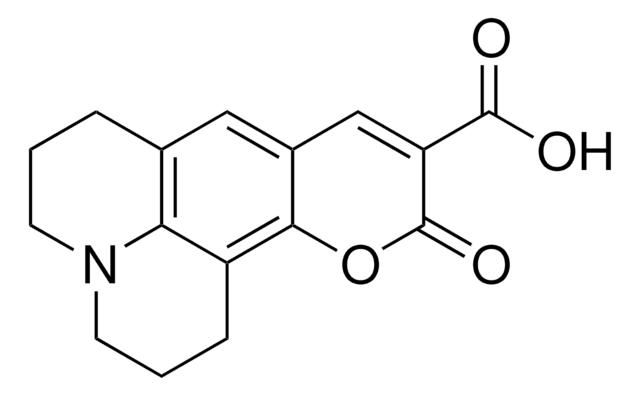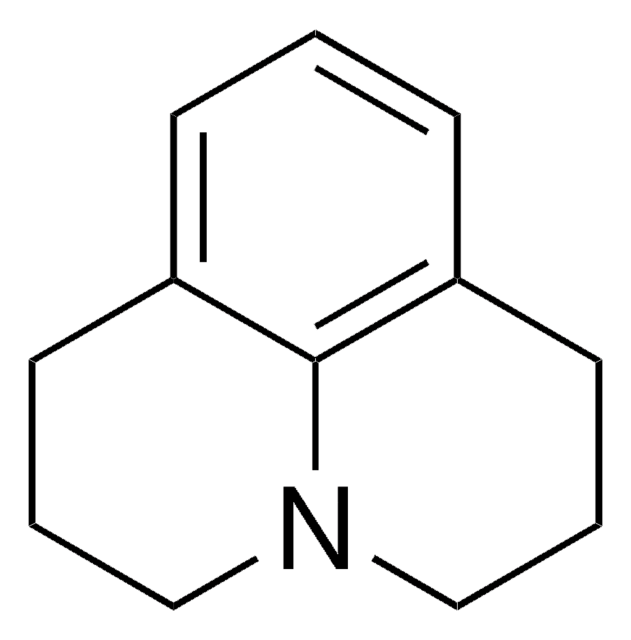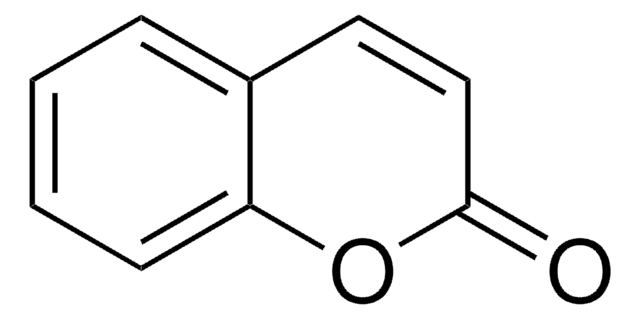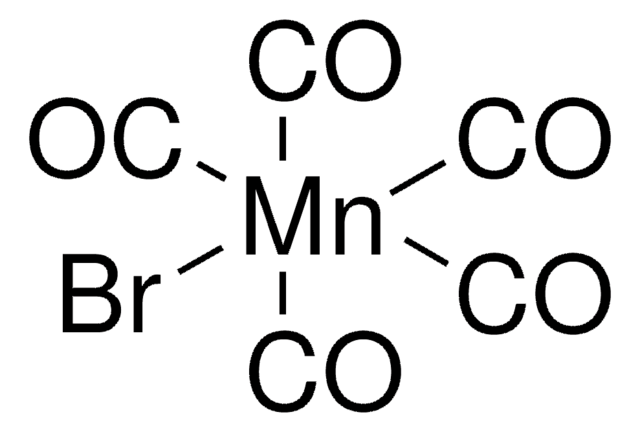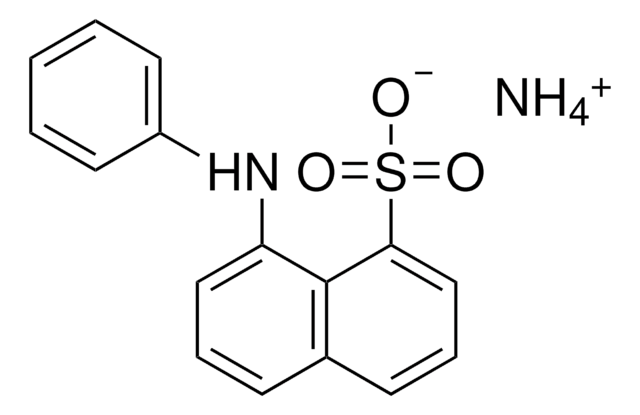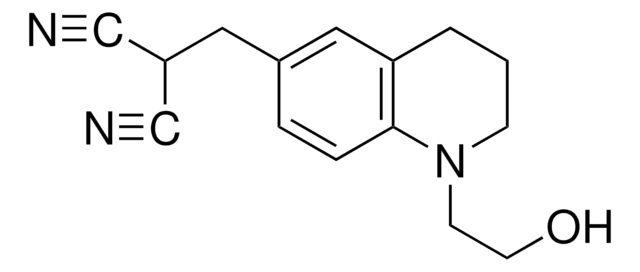72301
9-(2-Carboxy-2-cyanovinyl)julolidine
BioReagent, suitable for fluorescence, ≥97.0% (HPLC)
동의어(들):
9-([E]-2-Carboxy-2-cyanovinyl)julolidine, CCVJ
로그인조직 및 계약 가격 보기
모든 사진(1)
About This Item
실험식(Hill 표기법):
C16H16N2O2
CAS Number:
Molecular Weight:
268.31
MDL number:
UNSPSC 코드:
12352108
PubChem Substance ID:
NACRES:
NA.32
추천 제품
제품 라인
BioReagent
Quality Level
분석
≥97.0% (HPLC)
양식
solid
solubility
DMSO: soluble
chloroform: soluble
형광
λex 433 nm; λem 500 nm in 50 mM Tris pH 8.0; 40% glycerol
적합성
suitable for fluorescence
SMILES string
OC(=O)\C(=C\c1cc2CCCN3CCCc(c1)c23)C#N
InChI
1S/C16H16N2O2/c17-10-14(16(19)20)9-11-7-12-3-1-5-18-6-2-4-13(8-11)15(12)18/h7-9H,1-6H2,(H,19,20)/b14-9+
InChI key
JXENNHTVELFRHV-NTEUORMPSA-N
유사한 제품을 찾으십니까? 방문 제품 비교 안내
애플리케이션
Fluorescent probe for binding to proteins etc., quantum yield increases by decreasing free rotation: fluorescent molecular rotor.
포장
Bottomless glass bottle. Contents are inside inserted fused cone.
Storage Class Code
11 - Combustible Solids
WGK
WGK 3
Flash Point (°F)
Not applicable
Flash Point (°C)
Not applicable
개인 보호 장비
dust mask type N95 (US), Eyeshields, Gloves
이미 열람한 고객
Elisabeth Ablinger et al.
International journal of pharmaceutics, 441(1-2), 255-260 (2012-12-04)
A differential scanning fluorimetry (DSF) based high-throughput screening assay with the fluorescent molecular rotor CCVJ (9-(2-carboxy-2-cyanovinyl)julolidine) was developed. CCVJ is mainly sensitive to viscosity and less to polarity in comparison to polarity-sensitive dyes like SYPRO Orange, which was commonly used
Christopher Rumble et al.
The journal of physical chemistry. A, 116(44), 10786-10792 (2012-10-27)
The photochemistry of the rotor probe 9-(2-carboxy-2-cyanovinyl)julolidine (CCVJ) was studied to elucidate a curious effect of fluid flow previously reported. The apparent sensitivity to fluid motion observed in CCVJ but not in the closely related molecule 9-(dicyanovinyl)julolidine (DCVJ) is found
Xingyun Peng et al.
Carbohydrate polymers, 250, 116859-116859 (2020-10-15)
Fluorescence emissions of molecular rotors (MRs) are affected by local restrictions to molecular motion, and therefore it was considered that MRs can be used as structural probes of biopolymers. In this study, 9-(2-carboxy-2-cyanovinyl)-julolidine (CCVJ), a hydrophilic MR, was used to
James A Levitt et al.
Chemphyschem : a European journal of chemical physics and physical chemistry, 12(3), 662-672 (2011-02-18)
We present polarization-resolved fluorescence measurements of fluorescent molecular rotors 9-(2-carboxy-2-cyanovinyl)julolidine (CCVJ), 9-(2,2-dicyanovinyl)julolidine (DCVJ), and a meso-substituted boron dipyrromethene (BODIPY-C(12)). The photophysical properties of these molecules are highly dependent on the viscosity of the surrounding solvent. The relationship between their quantum
Sagar Satpathi et al.
Organic & biomolecular chemistry, 17(21), 5392-5399 (2019-05-21)
Here, we have explored the light-up property of coumarin 343 (C343) selectively towards various i-motif DNAs based on the recognition of hemi-protonated cytosine-cytosine base pairing, unlike other DNA structures. We have also demonstrated the versatile ability of this i-motif ligand
자사의 과학자팀은 생명 과학, 재료 과학, 화학 합성, 크로마토그래피, 분석 및 기타 많은 영역을 포함한 모든 과학 분야에 경험이 있습니다..
고객지원팀으로 연락바랍니다.


